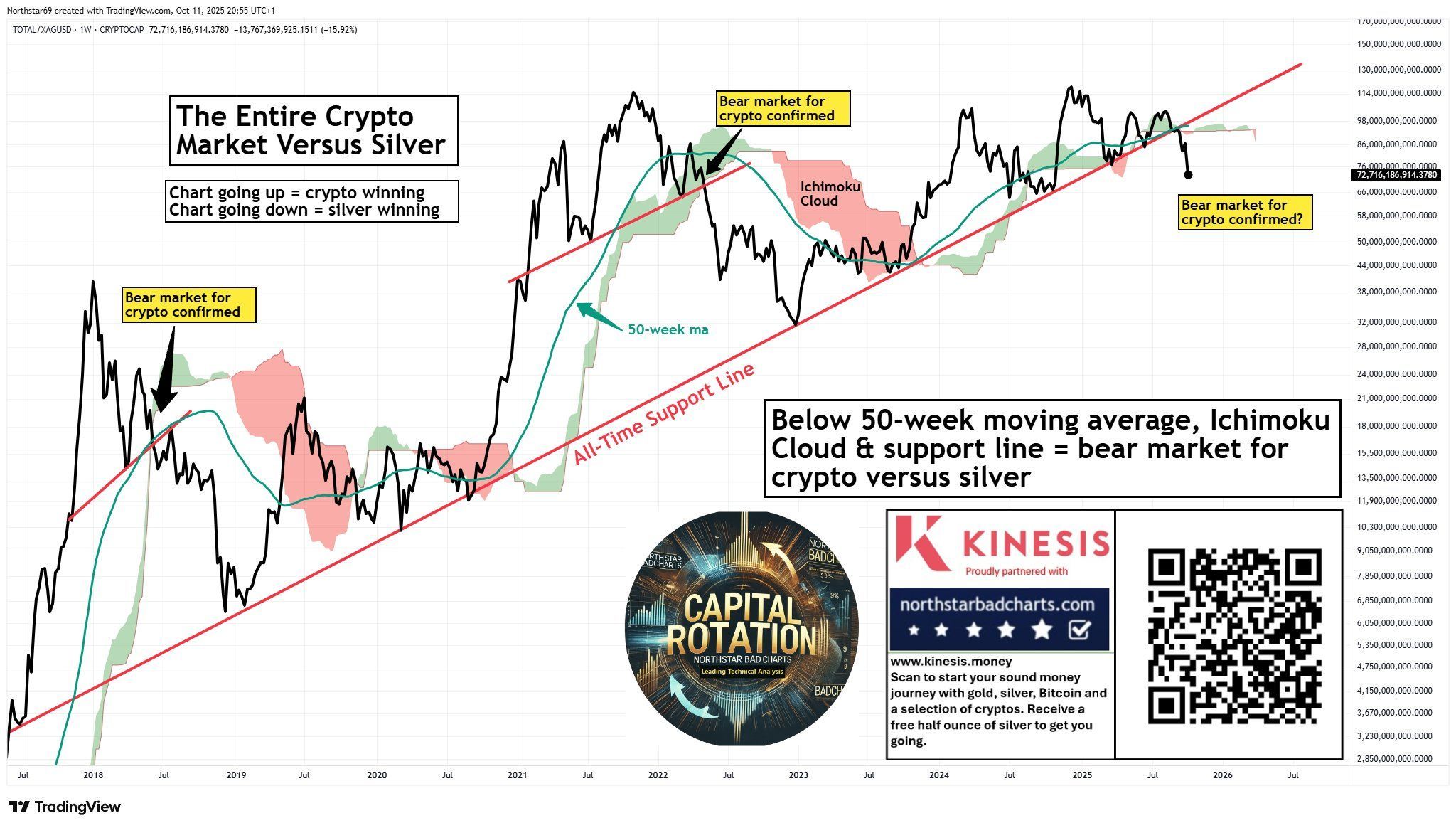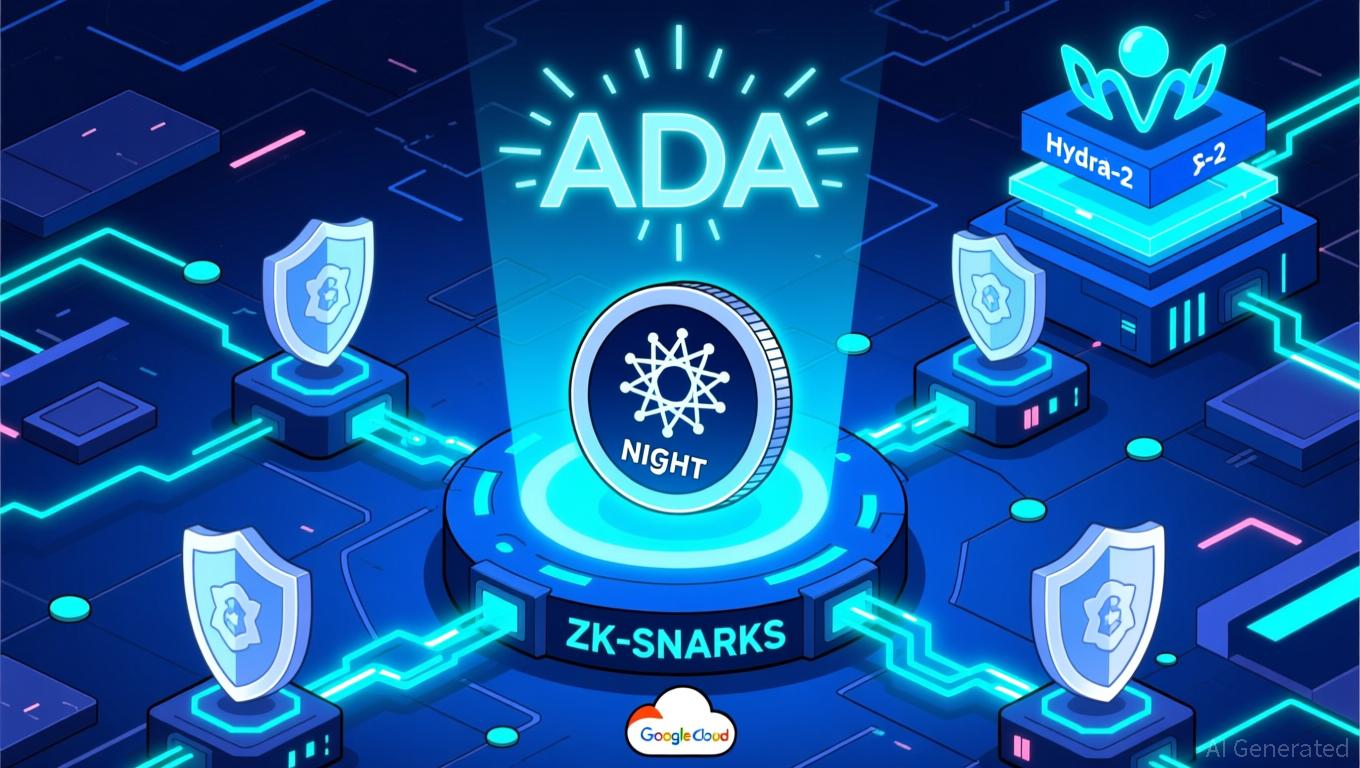ATH Silver Flips Bitcoin: Has the Age of Digital Gold Finally Ended?
Silver’s historic rally is challenging crypto’s “digital gold” narrative. With Bitcoin lagging and silver surging, investors wonder if this marks the start of a new era favoring tangible assets over digital ones.
While the digital asset market wavers, silver has quietly reached its highest price in nearly half a century.
The reversal between the two asset classes — silver and crypto — not only reflects a shift in capital flow, but also raises a bigger question: is the era of “digital gold” giving way to traditional assets?
The Silver Surge and Signs of Capital Rotation
The global asset market is witnessing a rare turning point. Silver has just reached its highest level in about 45 years, marking a historic peak for the metal. Physical silver demand is also surging unprecedentedly, with large-scale purchases and deliveries from international depositories.
Not only has silver reached a new high, but gold is also moving in the same direction. Amid this rally of traditional assets, Bitcoin and Ethereum have fallen sharply following the recent Crypto Black Friday event. Silver’s market capitalization has now risen to the top tier of global assets, surpassing bitcoin.
 Silver’s market cap has overtaken Bitcoin’s. Source:
Silver’s market cap has overtaken Bitcoin’s. Source:
The price trajectories of these two seemingly unrelated asset classes are now moving in opposite directions. This divergence is prompting investors to ask: Are we witnessing the beginning of a “bear market” for crypto versus silver?
“Gold and silver continue to melt up as Bitcoin and Ether continue to melt down. Crypto buyers are in for a rude awakening and will soon learn a very valuable but expensive lesson. Fortunately, most crypto owners are young with lots of time to earn back what they’re about to lose,” a prominent economist Peter Schiff shared.
Technical data also paints a concerning picture for Bitcoin. Analyst Northstar observed that cryptocurrencies peaked against silver four years ago. Since their 2021 highs, the Bitcoin/silver ratio has continued to decline — and now it’s plunging once again.
“Objectively, the entire crypto market now appears to be entering a bear market versus silver,” Northstar said.
 Correlation between the silver and crypto markets: Source:
Correlation between the silver and crypto markets: Source:
Some investors share stories of painful losses, like a trader who lost 80% of their portfolio value within hours during the recent Crypto Black Friday. Ironically, this trader had once been a “silver warrior” before selling at $39 to chase high-risk crypto assets.
When Tangible Assets Rise and Challenge Digital Conviction
This trend reflects a cyclical rotation between physical and digital assets. Amid growing fears of recession and persistently high interest rates, investors are returning to traditional safe havens. Commodity strategist Mike McGlone previously predicted that the next downturn — potentially arriving in Q4 2025 — could trigger a “mean reversion” for the crypto market, which has grown too quickly relative to its intrinsic value.
The rise of silver is due not only to its physical scarcity but also a shift in investor psychology — fears surrounding the US financial system and soaring debt are driving investors toward “real” assets.
Veteran investor Max Keiser, however, maintains that Bitcoin remains the superior scarce asset, capable of outperforming everything else in the long run. Despite Bitcoin’s recent volatility, investors may return to Bitcoin as gold and silver become increasingly challenging to acquire over the longer horizon.
“As Gold & Silver disappears from the market, unobtainable at any price, frustrated buyers will turn to Bitcoin.”
Disclaimer: The content of this article solely reflects the author's opinion and does not represent the platform in any capacity. This article is not intended to serve as a reference for making investment decisions.
You may also like
Cardano News Update: Midnight Achieves 24 Billion Token Milestone at 0.80 ADA, Driven by Cardano's Minimal Fees
- Midnight's Cardano-based privacy sidechain minted 24B NIGHT tokens at 0.80 ADA ($0.52), showcasing Cardano's low fees and scalability ahead of Dec 8, 2025 launch. - The project uses ZK-SNARKs for privacy-compliant transactions and a dual-token model (NIGHT for governance, DUST for shielded payments) with cross-chain synchronization. - Token distribution will occur in phases over 360 days, with initial allocations to early contributors and planned exchange listings to stabilize market dynamics. - Cardano'

ZKP's Code-Driven Fairness Transforms Cryptocurrency Auctions
- Zero Knowledge Proof (ZKP) launches a transparent, fair, anti-whale ICA model using real-time demand and on-chain data for token distribution. - Daily 24-hour auctions allocate 200M tokens via dynamic pricing, with contributions in ETH/USDC/ZUSD determining final prices through algorithmic calculations. - Smart contracts enforce $50,000 per-wallet caps to prevent market manipulation, ensuring equal access through code-enforced fairness. - Pre-built infrastructure including hardware/software and a decentr

Bitcoin’s Sharp Decline: Caution Sign or Chance to Invest?
- Bitcoin's $87,000 drop reflects macroeconomic pressures from Fed policy shifts and $2.7T U.S. stock market losses, with Ray Dalio questioning its reserve asset utility. - The Bitcoin for America Act enables tax payments in BTC, creating a 4. 3M coin Strategic Reserve potentially worth $14T at $3.25M/coin, signaling institutional confidence. - Global regulators (MiCA, FIMA Act) reduce crypto ambiguity while Bernstein sees $80,000 as a potential buying zone amid ETF inflows and Trump-era policy tailwinds.
The Factors That Led to Bitcoin’s Sharp Decline at the End of 2025
- Bitcoin's late-2025 crash stemmed from Fed rate hikes, regulatory ambiguity, and institutional risk aversion despite adoption growth. - The Fed's hawkish stance reduced liquidity, pushing investors toward fixed-income assets while SEC's inconsistent enforcement deepened uncertainty. - Institutional Bitcoin holdings (3.5% circulating supply) couldn't offset sell-offs as macroeconomic pressures and legal vacuums triggered hedging strategies. - Market participants now prioritize rate-hedging tools, regulato
